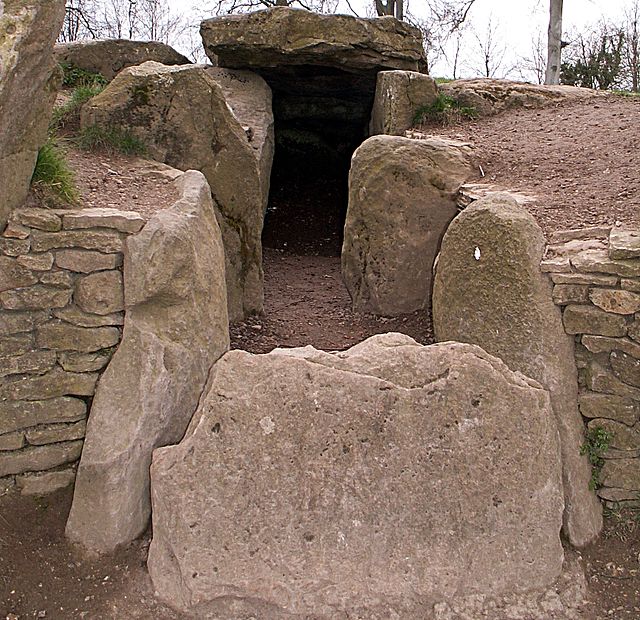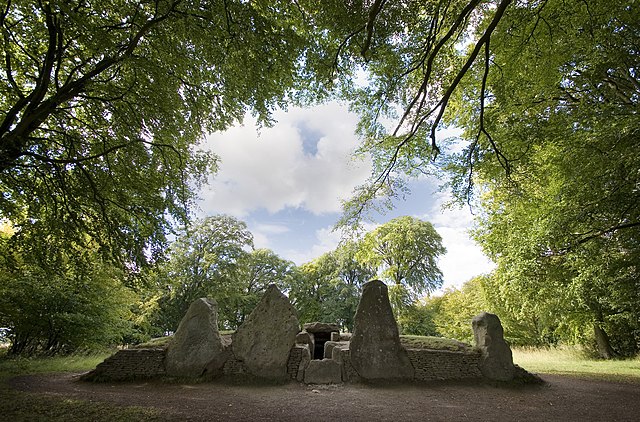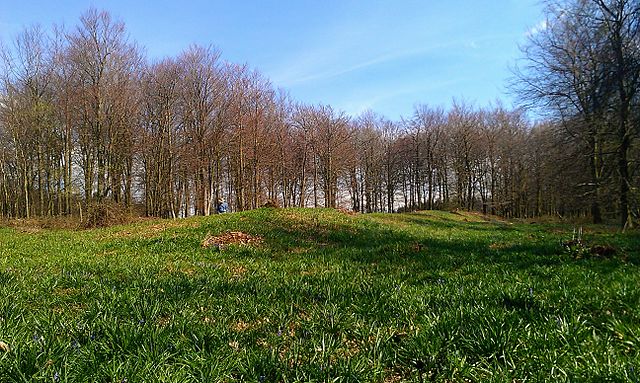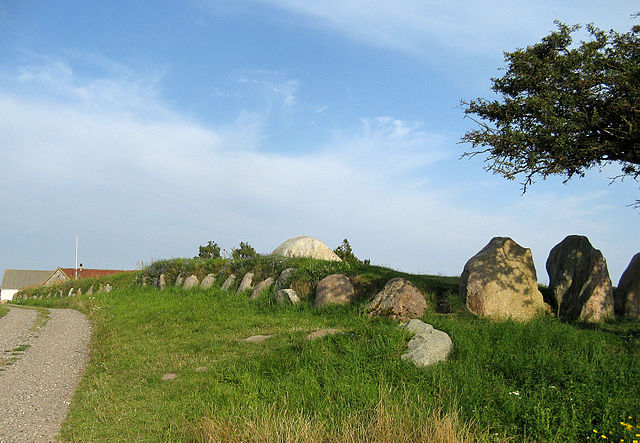The Cotswold-Severn Group are a series of long barrows erected in an area of western Britain during the Early Neolithic. Around 200 known examples of long barrows are known from the Cotswold-Severn region, although an unknown number of others were likely destroyed prior to being recorded.
The exposed stone burial chambers of Wayland's Smithy long barrow, Oxfordshire, U.K.
The entrance to Wayland's Smithy, one of the Cotswold-Severn Group in modern Oxfordshire.
Uley Long Barrow, also known as "Hetty Pegler's Tump", in Gloucestershire
The front area of West Kennet Long Barrow in Wiltshire
Long barrows are a style of monument constructed across Western Europe in the fifth and fourth millennia BCE, during the Early Neolithic period. Typically constructed from earth and either timber or stone, those using the latter material represent the oldest widespread tradition of stone construction in the world. Around 40,000 long barrows survive today.
View of Wayland's Smithy Long Barrow, a long barrow near Uffington in Oxfordshire
In cases such as Kit's Coty House, Kent, the earthen mound of a long barrow has been worn away by the weather or removed, exposing a stone chamber within. In this case, the surviving chamber represents a trilithon that is commonly called a dolmen.
Jacket's Field Long Barrow, one of the earthen long barrows that are clustered around the River Stour in Kent.
The Grønsalen Barrow on the Danish island of Møn







